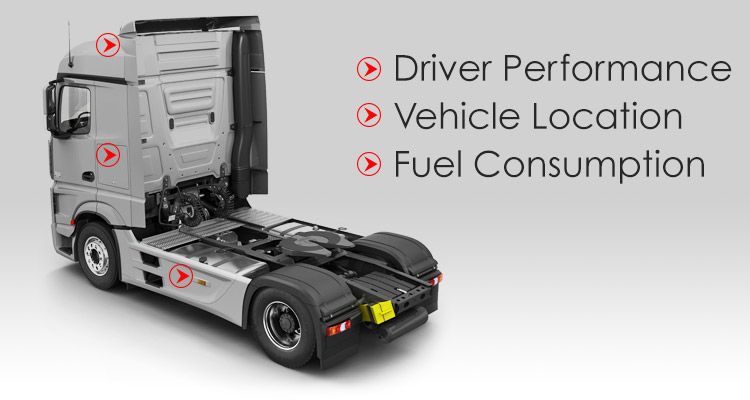
While most companies consider their core business to be unrelated to transport, any vehicles being used for business purposes are adding unnecessary risk and cost to your operation. In today’s competitive environment in an era of sustainability, there are steps we can take to mitigate the risk and lower costs. This means assessing the safety performance and examining the efficiency of drivers and vehicles. MiXTelematics conducted a great webinar to this topic.
Fleet Managers face a number of challenges on a daily basis, one of which is their duty of care to protect drivers and ensure fleet safety. Did you know that fleet drivers are up to 50%* more likely to be hurt or killed in road crashes than any other type of driver? Telematics has a huge role to play in improving driver safety. From using telematics to help with changing driver behavior to using different technologies to improve overall fleet safety, MiX Telematics has a number of guides and case studies available to download free of charge.
The first question is what is an acceptable level of safety performance; how often are incidents occurring, and how severe are they? This lagging indicator will establish a benchmark and allow for targets and objectives to be set for improvement.
The common bi-product from focusing on safety performance are bottom line savings. Whilst initiatives targeting training and monitoring individual driver performance do come at an initial cost, the return on the investment can be achieved within the first 6 months and contribute to bottom line savings for years to come.
Both safety and efficiency improvements can be achieved using common technology, training and consequence management. Addressing the low hanging fruit by managing time, limiting idling and identifying inefficient utilization will further reduce costs and improve efficiency.
Companies that focus on their fleets in this manner are gaining a competitive advantage from improved safety performance and reduced operating costs.
Tips:
DRIVERS:
1) A driver’s license alone is not enough to provide a driver with the skills they need to safely navigate one of the most dangerous environments on earth – the roads. Defensive Driver Training compliments the cognitive skills of the driver with ability to identify and avoid hazards in real time.
2) Inattention and distraction is a leading causation factor for motor vehicle crashes. Help remove the distractions such as mobile phones by placing them in the glove box before we set out to avoid distraction. No phone call is worth your life.
3) Fatigue affects everyone at some point. Even though there is no magic formula to know when a driver will become fatigued – we should ensure that drivers have sufficient rest before driving and plan to take breaks periodically to refresh.
VEHICLES:
1) Different vehicles offer different safety features, thankfully we have international standards such as NCAP that allow purchasers to reference the safety rating of a vehicle. Don’t forget to do your own research.
2) Vehicle overloading is a common issue in the UAE. Remember the vehicle is designed to carry a specific payload of passengers and cargo – consult the manufacturer to understand the limitations of your vehicles.
3) Vehicle maintenance is essential to ensure the vehicle remains safe and reliable. An under-inflated tyre will increase fuel consumption and may fail prematurely causing a loss of control. Pre-trip vehicle inspections by your staff are a good method of checking the essentials before driving.
ROADS:
1) Not all roads are the same. Are your drivers travelling on the safest roads? The best roads are forgiving and have protection to reduce the impact speed in the event of a collision.
2) Road hazards are prevalent in the UAE, these include but are not limited to; animal crossings, unmarked intersections, merging traffic and road works. These changing conditions should be monitored and communicated to drivers to increase awareness.
3) High speeds and high congestion are magnets for crashes. Avoid roads where either exist by either changing your travel time or finding an alternate route.
Share your story







